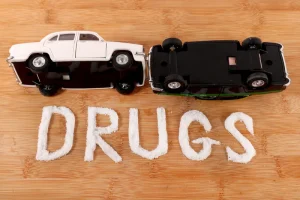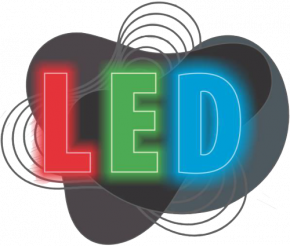Alcohol use and death by suicide: A meta-analysis of 33 studies

“Stress, loneliness, and social isolation; and mental health conditions might also have contributed to the increase in deaths from excessive alcohol use during the COVID-19 pandemic,” the report said. There appears to be a consistent finding of an immediately higher cardiovascular risk following any alcohol consumption, but by 24 hours, only heavy alcohol intake confers continued risk 19. Alcoholism is known to be greatly underdiagnosed in death certificates, a fact that biases estimates of alcohol-related mortality. An autopsy series of 1658 cases showed that death certificates mentioned alcohol-related diseases in less than half of these cases 20. Another study limitation was that alcohol consumption per capita was determined from aggregate data and not from alcohol exposure for individuals.
- At this stage, even if someone is told that their drinking is killing them, they are unable to stop on their own.
- By identifying such mutations in family members, and initiating appropriate management, it is possible to prevent further sudden arrhythmic cardiac deaths.
- This can cause a variety of symptoms, ranging from insomnia to an upset stomach.
- A more quantifiable definition of heavy alcohol use would also have allowed investigation of the magnitude and duration of excess alcohol use and the post mortem changes observed in this cohort.
Alcohol-Free Beer Effects on Cirrhosis of the Liver
Age-specific mortality rates are used to allow comparisons between specified age groups. The purpose of this study was to evaluate mortality and life expectancy in people who had AUD in Denmark, Finland and Sweden between 1987 and 2006. It’s patient stories like this one that led Tapper to research liver disease in young people.
What we don’t know: The significant limitations of alcohol-related health research
- There was no established history regarding illicit drug use in 43 (69.4%) cases of SUDAM and 12 (29.3%) cases of SADS.
- Once detox is complete, alcoholics can begin tackling problematic behaviors related to their addiction and learn how to live sober again.
- Please check with the appropriate physician regarding health questions and concerns.
Evidence-based alcohol policies (e.g., reducing the number and concentration of places selling alcohol and increasing alcohol taxes) could help reverse increasing alcohol-attributable death rates. People hospitalized with alcohol use disorder have an average life expectancy of 47–53 years (men) and 50–58 years (women) and die 24–28 years earlier than people in the general population. Tapper says he thinks that policy could play a role in addressing the problem. For instance, strategic taxation of alcoholic beverages could deter consumption, just as raising the taxes on cigarettes has been shown to reduce smoking. He cites the example of Scotland, which recently set minimum prices for units of alcohol to deter binge drinking. He also points to public health interventions, such as counseling, that help people quit drinking.
Physical Signs of an Alcoholic
By identifying such mutations in family members, and initiating appropriate management, it is possible to prevent further sudden arrhythmic cardiac deaths. The findings in this report are subject to at least two limitations. First, population-attributable fractions were calculated based on data including only persons who currently drank alcohol. Because some persons who formerly drank alcohol might also die from alcohol-related causes, population-attributable fractions might underestimate alcohol-attributable deaths. Increases in deaths from excessive alcohol use during the study period occurred among all age groups. A recent study found that one in eight total deaths among U.S. adults aged 20–64 years during 2015–2019 resulted from excessive alcohol use (9).

However, treatment is effective in improving the survival rate for this condition. Alcohol withdrawal can also cause death, especially without treatment. Inpatient and outpatient treatments are available, and these depend on factors including current withdrawal severity and the severity of what is alcoholism past withdrawals. They also might have ‘emotional and mental motivations’ for drinking.
Alcoholic Liver Diseases

Treatment rates for alcohol use disorders are notably low, especially for the use of medication, a recommended AUD treatment component. Although the opioid crisis has been declared a public health emergency by the U.S. Department of Health and Human Services since 2017, no similar declaration exists regarding alcohol deaths.
This chemical also interferes with the liver’s ability to break down and metabolize fats. This causes that fat to accumulate and may lead to fatty liver — an early stage of alcohol-related liver disease. For women, binge drinking is defined as consuming four or more drinks in the span of 2 hours. The US Centers for Disease Control and Prevention said there were about 178-thousand deaths from excessive alcohol use from 2020 through 2021, which is a 29 percent increase from just five years earlier. At the height of the COVID-19 pandemic, there were an average of about 488 deaths per day from excessive alcohol drinking. Age-standardised mortality rates allow for differences in the age structure of populations, and therefore allow valid comparisons to be made between geographical areas, the sexes, and over time.
- Alcohol withdrawal can also cause death, especially without treatment.
- This would further aid differentiating between SUDAM and SADS, and subsequent recommendations for screening for channelopathy in family members.
- They may appear red in the face or look bloated and generally unwell.
Figure 1: Of the four UK constituent countries, rates of alcohol-specific deaths increased in England and Wales in 2023

The analysis revealed that deaths from liver-related illnesses have increased dramatically, and mortality in young people rose the fastest. Although these illnesses can be caused by several things including obesity and hepatitis C infection, the rise among young Americans was caused by alcohol how do people die of alcoholism consumption. The number of 25- to 34-year-olds who died annually from alcohol-related liver disease nearly tripled between 1999 and 2016, from 259 in 1999 to 767 in 2016, an average annual increase of around 10 percent.

Shots – Health News
- The number of 25- to 34-year-olds who died annually from alcohol-related liver disease nearly tripled between 1999 and 2016, from 259 in 1999 to 767 in 2016, an average annual increase of around 10 percent.
- Sudden death in the context of AUD is not the same thing as death from alcohol withdrawal.
- These symptoms can sometimes progress to more serious issues, such as hallucinations and alcohol withdrawal seizures.
If drinking alcohol is taking a toll on your mental health, let your doctor know or talk to a licensed mental health specialist such as a counselor or therapist. If you drink heavily or notice signs of liver damage or other health issues that may be related to drinking too much alcohol, talk to your doctor about it. If necessary, they can refer you to a rehabilitation center to get the drinking under control. In fact, according to the World Health Organization, alcohol-related deaths total around 3 million each year globally. Past studies have found that people bought more alcohol, particularly hard liquor and wine, during the early part of the pandemic. Binge drinking among adults between the ages of 35 of 50 in 2022 was higher than any other year during the past decade, other research has found.

However, HHS has set a priority goal of reducing emergency department visits for acute alcohol use, mental health conditions, suicide attempts, and drug overdoses by 10% by 2025. Deaths from causes fully attributable to alcohol use have increased during the past 2 decades in the United States, particularly from 2019 to 2020, concurrent with the onset of the COVID-19 pandemic. However, previous studies of trends have not assessed underlying causes of deaths that are partially attributable to alcohol use, such as injuries or certain types of cancer. During this time, deaths from excessive alcohol use among males increased 26.8%, from 94,362 per year to 119,606, and among females increased 34.7%, from 43,565 per year to 58,701.
